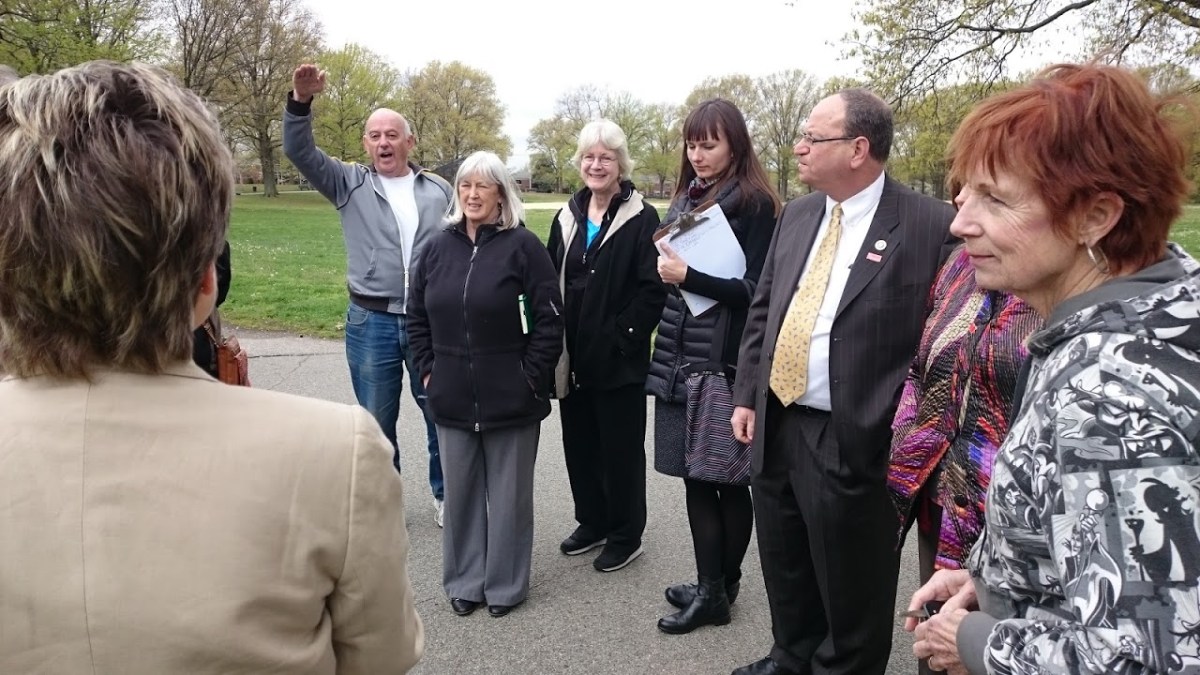The historic Vanderbilt Motor Parkway in eastern Queens is receiving an upgrade as resurfacing is set to begin as soon as Monday, Sept. 28.
The Vanderbilt Motor Parkway, which is also known as the Long Island Motor Parkway, runs from Alley Pond Park to Cunningham Park, including from Springfield Boulevard to 199th Street, just north of Kingsbury Avenue.
Councilman Barry Grodenchik helped secure $5 million from the mayor’s office for the project. The first phase of construction will reconstruct the Vanderbilt Motor Parkway from Winchester Boulevard to Springfield Boulevard and is expected to take about a year to complete.
Grodenchik also secured funding to refurbish the remainder of the parkway, which will take place in the second phase of the project.
This is the first major capital project in over 25 years on Vanderbilt Motor Parkway, according to Grodenchik. The resurfacing will ensure that eastern Queens residents have access to a high-quality open-air recreation venue for decades to come.
“I am so pleased to announce the start of work on the Vanderbilt Motor Parkway,” Grodenchik said. “This iconic throughway and historic treasure will now get the attention that it needs, and the residents of Eastern Queens are the beneficiaries.”
The Vanderbilt Motor Parkway falls within Council District 23, which has been represented by Grodenchik since 2015. The Vanderbilt is a major recreation and exercise venue in eastern Queens, where local residents enjoy walking, running, bicycling, roller skating, and skateboarding in a car-free zone.
“Vanderbilt Motor Parkway provides New Yorkers with unique opportunities to walk, run, or bike along the Brooklyn-Queens Greenway – one of our city’s most scenic routes,” said Michael Docket, NYC Parks Queens borough commissioner. “Thanks to Council Member Grodenchik’s support, we’re revitalizing a significant portion of this historic pathway. This is part of a larger renovation that will enhance the pedestrian and cyclist experience at Vanderbilt Motor Parkway for years to come.”
The main goals of the reconstruction are to repave the parkway, widen it where possible, and resolve drainage issues. Before work begins in the area, preliminary tasks include the erecting of fences, mobilizing equipment and installation of tree guards.
The Friends of Alley Pond Park and Cunningham Park are ecstatic that work is beginning on the upgrading and repairs of the Long Island Motor Parkway, the first motor parkway in the world.
“The Friends of Alley Pond Park seeks to sustain and improve the park to benefit all users, and the renovation of the Vanderbilt Motor Parkway will be welcomed by Park visitors who use the shared pathway to run, bicycle, and walk while enjoying the natural areas,” said Thomas McGlinchey, president, Friends of Alley Pond Park. “The historic Parkway promises safe connections to the rest of the Eastern Queens Greenway, and the renewed surface promises years of continued use by appreciative Park users.”
Marc Haken, president of Friends of Cunningham Park, thanked Grodenchik for securing the funds for the reconstruction of the parkway.
“This stretch of the parkway, which is used by hundreds of people every day for biking, walking, and pushing carriages, is a historic monument, and we cannot wait for the upgrade to be completed,” Haken said.
The parkway is an essential corridor for Queens residents during the COVID-19 pandemic, according to Joby Jacob, founder of Motor Parkway East.
“We look forward to walking, running, and biking on a rebuilt trail and hope it builds support for our efforts to reconnect the Long Island Motor Parkway with the rest of Long Island,” Jacob said.
The Vanderbilt Motor Parkway was built in 1908 by William Vanderbilt, a race or car enthusiast. The parkway once stretched 42 miles from Cunningham Park in Fresh Meadows to Riverhead in Suffolk County. Unlike today’s public parkways, it was private, used mostly by socialites, the rich, and race car drivers. It was the first roadway designed exclusively for automobiles, the first U.S. concrete highway, and the first to use overpasses and bridges.



































